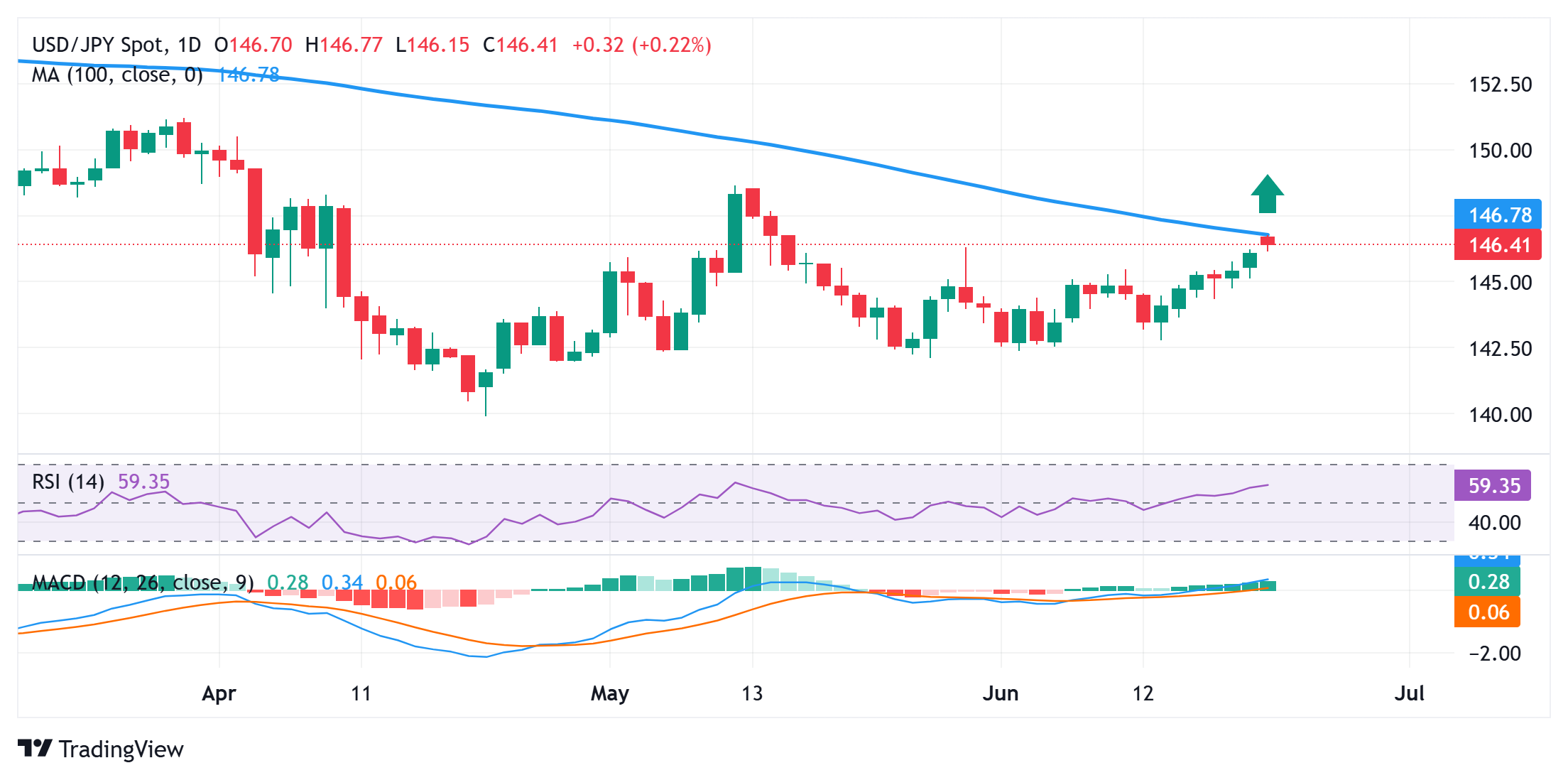JPY slides to over one-month low against a firmer USD
- The Japanese Yen continues to be weighed down by diminishing odds for a BoJ rate hike in 2025.
- The Fed’s hawkish outlook underpins the USD and lends additional support to the USD/JPY pair.
- The upbeat PMIs from Japan hold back the JPY bears from placing fresh bets and cap the major.
The Japanese Yen (JPY) kicks off the new week on a weaker note and drops to its lowest level since May 15 against a broadly firmer US Dollar (USD) during the Asian session. The Bank of Japan (BoJ) last week signaled its preference to move cautiously in normalizing still-easy monetary policy, which forced investors to push back their expectations about the likely timing of the next interest rate hike. Apart from this, concerns that existing 25% US tariffs on Japanese vehicles and 24% reciprocal levies on other imports would impact the Japanese economy, turn out to be another factor undermining the JPY.
Meanwhile, Japan’s annual National Consumer Price Index (CPI) remained well above the BoJ’s 2% target in May and gives the central bank more impetus to hike interest rates again in the coming months. Adding to this, the better-than-expected release of Japan’s PMI earlier this Monday backs the case for more BoJ rate hikes. Moreover, the risk of a further escalation of geopolitical tensions in the Middle East, in the wake of the US bombing of key nuclear sites in Iran on Sunday, could benefit the JPY’s relative safe-haven status. This might further contribute to capping the upside for the USD/JPY pair.
Japanese Yen bulls remain on the sidelines amid mixed fundamental cues
- The Bank of Japan last week decided to slow the pace of reduction in its bond purchases from fiscal 2026. Moreover, the gloomy economic outlook and concerns about the potential economic fallout from US trade tariffs suggest that the BoJ could forgo raising interest rates in 2025.
- Data released on Friday showed that Japan’s core inflation remained above the central bank’s 2% target for well over three years and rose to a more than two-year high in May. This keeps the door open for further rate hikes by the BoJ, though it fails to boost the Japanese Yen.
- Furthermore, the au Jibun Purchasing Managers’ Index (PMI) showed on Monday that Japan’s manufacturing moved back into expansion territory for the first time since May 2024. The Manufacturing PMI rose sharply from the 49.4 seen in the previous month to 50.4 in June.
- Adding to this, the gauge for the services sector climbed to 51.5 during the reported month from 51.0 in May, while the Composite PMI advanced to 51.4 in June from 50.2 in May. This was the third straight month of growth in private sector activity and the fastest pace since February.
- Meanwhile, the Federal Reserve projected two rate cuts this year. However, Fed officials forecast only one 25-basis-points rate cut in each of 2026 and 2027 amid worries that the Trump administration’s tariffs could push up consumer prices, which underpins the US Dollar.
- On the geopolitical front, the US joined Israel in the military action against Iran and bombed three nuclear sites on Sunday. The US launched 75 precision-guided munitions, including more than two dozen Tomahawk missiles, and more than 125 military aircraft in the operation.
- Moreover, US Defense Secretary Pete Hegseth warned Iran against following through with past threats of retaliation. Adding to this, Vice President JD Vance said that the US was not at war with Iran but rather its nuclear program. Investors now await Iran’s response to US strikes.
USD/JPY could extend the positive move once the 100-day SMA hurdle is cleared

From a technical perspective, the USD/JPY pair needs to make it through the 100-day Simple Moving Average (SMA) barrier around the 146.80 region for bulls to retain short-term control. Some follow-through buying beyond the 147.00 mark will confirm a positive outlook and lift spot prices to the 147.40-147.45 intermediate hurdle en route to the 148.00 round figure and 148.65 region, or the May monthly swing high.
On the flip side, any corrective pullback below the 146.00 mark is more likely to attract fresh buyers and find decent support near the 145.30-145.25 area. This, in turn, should help limit the downside for the USD/JPY pair near the 145.00 psychological mark. The latter should act as a strong base for spot prices, which if broken decisively might prompt some technical selling and shift the near-term bias in favor of bearish traders.




